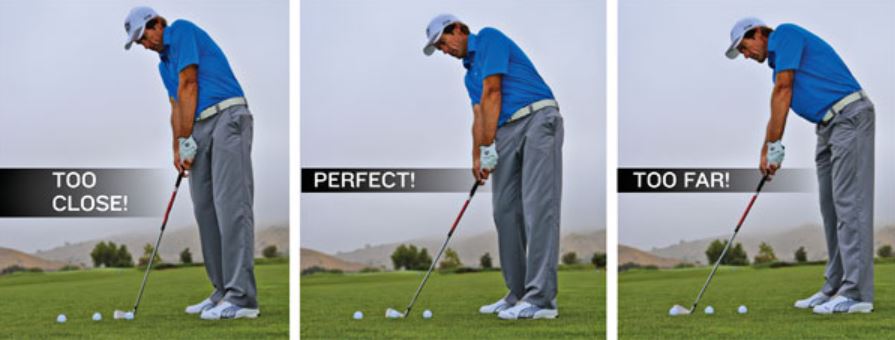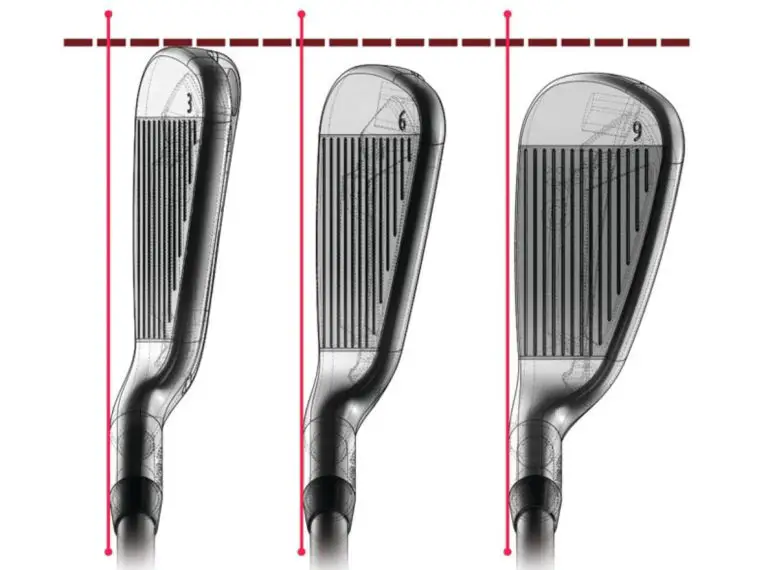How Far Should I Stand From The Golf Ball

Finding the ideal distance to stand from the golf ball is a fundamental aspect of the game that directly influences the quality and consistency of your shots. It’s a question that golfers of all skill levels ponder: How far should I stand from the golf ball? The answer lies in a combination of factors, including body measurements, club length, swing characteristics, and personal comfort.
Having the correct stance distance is essential for achieving proper balance, stability, and optimal swing mechanics. Standing too close to the ball can result in mishits, loss of power, and compromised swing path. Conversely, standing too far away can lead to posture issues, instability, and difficulty making solid contact.
In this comprehensive guide, we will explore the key factors that affect your stance distance and provide practical guidance on determining the ideal position. We’ll delve into body measurements and physical attributes, the impact of club length and type, and the influence of personal swing characteristics. Moreover, we’ll discuss the importance of experimentation, feedback, and professional guidance in fine-tuning your stance distance.
Whether you’re a beginner looking to establish a starting point or an experienced golfer aiming to refine your stance, this article will equip you with the knowledge and insights to optimize your positioning for better accuracy, power, and consistency on the golf course. So, let’s explore the fascinating world of finding the perfect distance to stand from the golf ball and take your game to new heights.

Factors Affecting Proper Stance
Before we delve into determining the ideal distance to stand from the golf ball, it’s important to consider the factors that influence your stance. These factors include your body measurements and physical attributes, the length and type of club you’re using, as well as your personal swing characteristics.
Body Measurements and Physical Attributes
The uniqueness of every golfer’s body means that certain measurements and physical attributes play a role in determining the proper stance distance. Here are a few key attributes to consider:
- Height and Posture: Taller golfers may need to stand farther away from the ball to ensure a comfortable and effective swing, while shorter golfers may need to stand closer. Additionally, maintaining good posture throughout your swing is essential for consistency and power.
- Arm Length and Width: The length and width of your arms can impact your stance distance. Golfers with longer arms may benefit from standing slightly farther away to accommodate their swing arc, while those with shorter arms may find a closer stance more suitable.
Club Length and Type
The length and type of club you’re using also play a role in determining the distance at which you should stand from the golf ball. Consider the following points:
- Differences in Club Lengths: Each club in your golf bag has a different length, which affects your stance distance. Longer clubs, such as drivers and fairway woods, require a slightly wider stance compared to shorter irons or wedges.
- Impact of Club Type on Stance: The type of shot you’re attempting, whether it’s a full swing, chip shot, or putt, can influence your stance distance. For example, when using a wedge for a short chip shot around the green, you might stand closer to the ball compared to a full swing with a driver.
Personal Swing Characteristics
Your individual swing characteristics also come into play when determining the optimal stance distance. Take the following factors into account:
- Swing Plane and Angle of Attack: The angle at which you approach the ball during your swing, known as the swing plane, can affect your stance distance. Golfers with a more upright swing plane might stand closer to the ball, while those with a flatter swing plane may stand slightly farther away.
- Swing Speed and Power: Golfers with higher swing speeds often benefit from standing a bit farther away from the ball, allowing for a more aggressive and powerful swing. Conversely, golfers with slower swing speeds may find a closer stance more comfortable and effective.
Determining the Ideal Stance Distance
Now that we understand the various factors that influence your stance, let’s explore how to determine the ideal distance to stand from the golf ball. There are basic principles to consider as well as some starting points that can guide you in finding the right stance distance.
Basic Stance Principles
Before getting into specifics, it’s important to adhere to some basic stance principles that apply to every golfer:
- Neutral Body Position: Maintain a neutral body position by standing tall with a slight bend at the waist. Avoid excessive slouching or leaning in any particular direction.
- Balanced Weight Distribution: Distribute your weight evenly between your feet, ensuring a balanced foundation and stability throughout your swing.
Establishing a Starting Point
For beginners or those looking to establish a baseline for their stance distance, there are some standard recommendations that can serve as a starting point. However, it’s important to note that these recommendations may vary based on individual factors and should be used as a reference rather than a strict rule.
- Standard Recommendations for Beginners: As a general guideline, beginners can start by standing with their feet shoulder-width apart and positioning the ball in line with the inside of their front foot. This starting point provides a solid foundation for developing a consistent swing.
- Adjusting Based on Individual Factors: Once you’ve established a starting point, you can make adjustments based on your body measurements, club length, and swing characteristics. It’s essential to experiment and fine-tune your stance distance to find what works best for you.
Experimentation and Feedback
Determining the ideal stance distance is not an exact science, and it often requires a process of trial and error. It’s crucial to incorporate experimentation and seek feedback to refine your stance. Here are some steps you can take:
Trial and Error Process
- Importance of Experimentation: Don’t be afraid to experiment with different stance distances during practice sessions. Start with your initial stance position and gradually make small adjustments to evaluate the impact on your swing and ball flight.
- Analyzing Ball Flight and Impact Feedback: Pay attention to the flight of the ball and the feedback you receive upon impact. If you consistently hit shots thin or fat, it may indicate that your stance distance needs adjustment. Experiment with moving closer or farther away from the ball to find the sweet spot.
Professional Guidance and Golf Lessons
While self-experimentation is valuable, seeking professional guidance can significantly expedite the process of finding your ideal stance distance. Consider the following avenues:
- Seeking Advice from Golf Instructors: Experienced golf instructors have the knowledge and expertise to assess your swing and help you fine-tune your stance. They can provide personalized recommendations based on your specific needs and goals.
- Utilizing Technology for Swing Analysis: Take advantage of technology such as launch monitors, video analysis, or 3D swing systems. These tools provide detailed insights into your swing mechanics, enabling you and your instructor to pinpoint areas of improvement, including your stance distance.
Fine-Tuning Your Stance Distance
Once you have established a starting point and received feedback from experimentation and professional guidance, it’s time to fine-tune your stance distance. Consider the following aspects for refinement:
Assessing Comfort and Stability
- Evaluating Balance and Control: Pay attention to your balance throughout the swing. If you feel unstable or off-balance, it may indicate that your stance distance needs adjustment. Gradually make small changes until you find a comfortable and stable position.
- Ensuring Proper Posture and Alignment: Maintain good posture and alignment by standing tall with a straight spine and aligning your feet, hips, and shoulders parallel to the target line. Proper alignment promotes a consistent and efficient swing.
Addressing Swing Consistency
- Achieving a Consistent Swing Plane: Your stance distance can impact your swing plane. Experiment with slight adjustments to find the distance that allows you to swing on your desired plane consistently. A consistent swing plane leads to more accurate and reliable shots.
- Adjusting Distance for Different Shots and Clubs: Remember that the ideal stance distance can vary depending on the shot you’re attempting and the club you’re using. For example, shorter clubs and delicate chip shots may require a slightly closer stance, while longer clubs and full swings may call for a slightly wider stance.
Common Stance Mistakes to Avoid
To ensure you’re on the right track with your stance distance, it’s important to be aware of common stance mistakes and avoid them. Here are a couple of common errors to watch out for:
Standing Too Close
- Impact on Swing Path and Clubhead Speed: Standing too close to the ball can result in a steep swing path, leading to inconsistent contact and reduced clubhead speed. It can also cause the club to approach the ball from an improper angle, resulting in mishits and a lack of control.
- Increased Risk of Mishits and Loss of Power: When standing too close, there is a higher chance of striking the ball with the club’s hosel or hitting the ground before impact, resulting in topped or fat shots. Additionally, standing too close limits your ability to generate power and may lead to a lack of distance.
Standing Too Far Away
- Compromised Posture and Stability: Standing too far away from the ball can cause excessive bending at the waist, leading to a hunched-over posture. This compromises your stability during the swing and can negatively affect your balance and overall swing mechanics.
- Difficulty in Making Solid Contact with the Ball: Being too far from the ball can make it challenging to consistently make solid contact. It increases the likelihood of striking the ground behind the ball or hitting the upper portion of the clubface, resulting in topped or thin shots.
By being mindful of these common stance mistakes, you can ensure that your positioning in relation to the golf ball optimizes your swing mechanics and shot outcomes.
Additional Considerations
In addition to the factors discussed earlier, there are a few more considerations to keep in mind when determining your stance distance. These factors can further enhance your performance on the golf course.
Course Conditions and Shot Types
- Adjusting Stance for Different Lies and Slopes: When faced with uneven lies or slopes on the golf course, you may need to make slight adjustments to your stance distance. For example, when hitting from an uphill lie, you might stand slightly farther from the ball to accommodate the slope.
- Adapting to Specific Shot Requirements: Different shots require varying stance distances. For example, when hitting a punch shot to keep the ball low, you might stand closer to the ball to create a more controlled and compact swing.
Flexibility and Mobility
- Incorporating Necessary Adjustments for Physical Limitations: Each golfer has unique physical attributes and limitations. If you have restricted mobility or flexibility, you may need to make slight modifications to your stance distance to accommodate your body’s capabilities while maintaining a comfortable and effective position.
- Maintaining a Comfortable and Effective Stance: Ultimately, finding the ideal stance distance is about creating a position that feels comfortable and allows you to swing freely while maintaining control. Regular practice, along with self-awareness and adjustments, will help you develop a stance that works best for your individual needs.
Conclusion
Determining the optimal distance to stand from the golf ball is a crucial aspect of your golf swing. While there are general guidelines and starting points to consider, it’s important to remember that finding the right stance distance is a personalized process. Factors such as body measurements, club length, swing characteristics, and personal comfort all contribute to your ideal stance.
Through experimentation, feedback, and professional guidance, you can refine your stance distance and achieve better consistency and performance on the golf course. Remember to prioritize balance, stability, and swing mechanics while adapting to different shots and course conditions.
By fine-tuning your stance distance and avoiding common mistakes, you’ll be on your way to achieving more accurate, powerful, and enjoyable golf shots. So, head out to the practice range, put these principles into action, and discover the stance distance that works best for you. Happy golfing!







